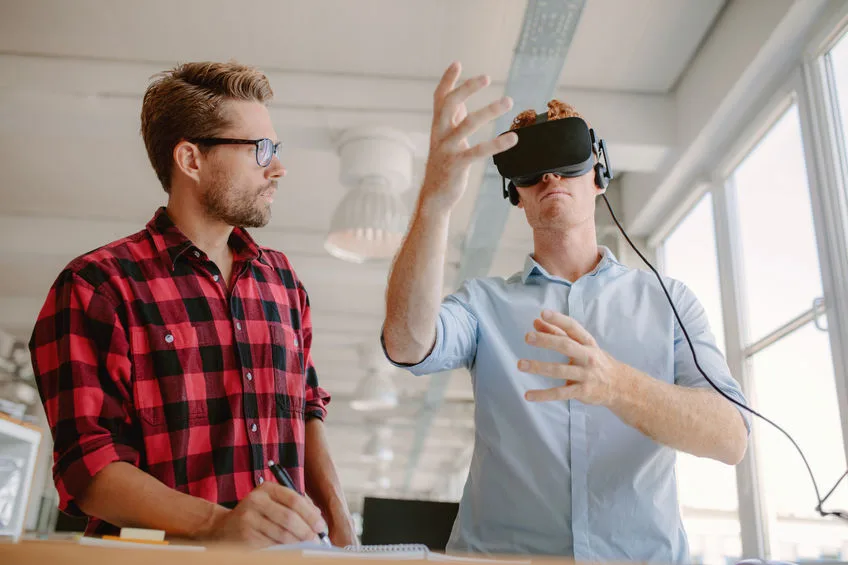Augmented reality (AR) and virtual reality (VR) has had immense influences on the field and study of architecture. It’s a widely used tool; universities, offices, homeowners, and interior designers all take advantage of it. A vast majority of furniture, paint, and appliance brands also now have apps that allow virtual viewing of their products in a physical space. Understanding these technologies and how they relate to construction services and architectural design is becoming ever more vital as these fields grow and change.
AR and VR: What’s the Difference?
The environments in virtual reality are entirely computer-generated; they are not “augmented,” or supplementing, anything in the physical world. These technologies give architects access to what is called gesture control—a feature which allows them to design and create using their hands instead of a touchpad or tablet. Architects can also use this technology to “walk through” computer-generated images of their works.
Augmented reality, on the other hand, is technology that interacts with the physical world to ease the design and construction process. To understand what this looks like in practice, see the list of Smartphone apps below.
- Pair
This app allows architects to visualize how furniture will look in their finished products. Users can drag and drop 3D renderings into a physical room, which is presented via the camera feature on an iPhone or iPad. Being able to maneuver through the room in virtual space makes this app easy to use.
- Arki
Arki operates in much the same manner; it overlays designs into any space via the camera on one’s cell phone. It even lets you change the color and materials of the items which you overlay, meaning the creative possibilities are endless.
- SmartReality
This app works with printed construction plans and Building Information Modeling (BIM) technology to generate an image in virtual space. It allows a user to zoom in to see the hypothetical stages of the project as it unfolds.
- Fuzor
Fuzor integrates in real-time with Revit (a BIM software), ensuring that a user’s files stay synced. This prevents mishaps caused by multiple versions of the same project. The app’s features include virtual annotation and the projection of lighting, colors and measurements.
Consider Miller Architects and Builders Commercial Contracting for Your Next Project
If you’re ready to harness the power of AR in your next construction project, contact Miller Architects and Builders of Saint Cloud. We are an innovative commercial contracting firm with the collaborative skills to make your next commercial construction project a success. Call us at 320.251.4109, or you can message us on our contact page. We serve Saint Cloud, Duluth, Mora and the surrounding areas.
